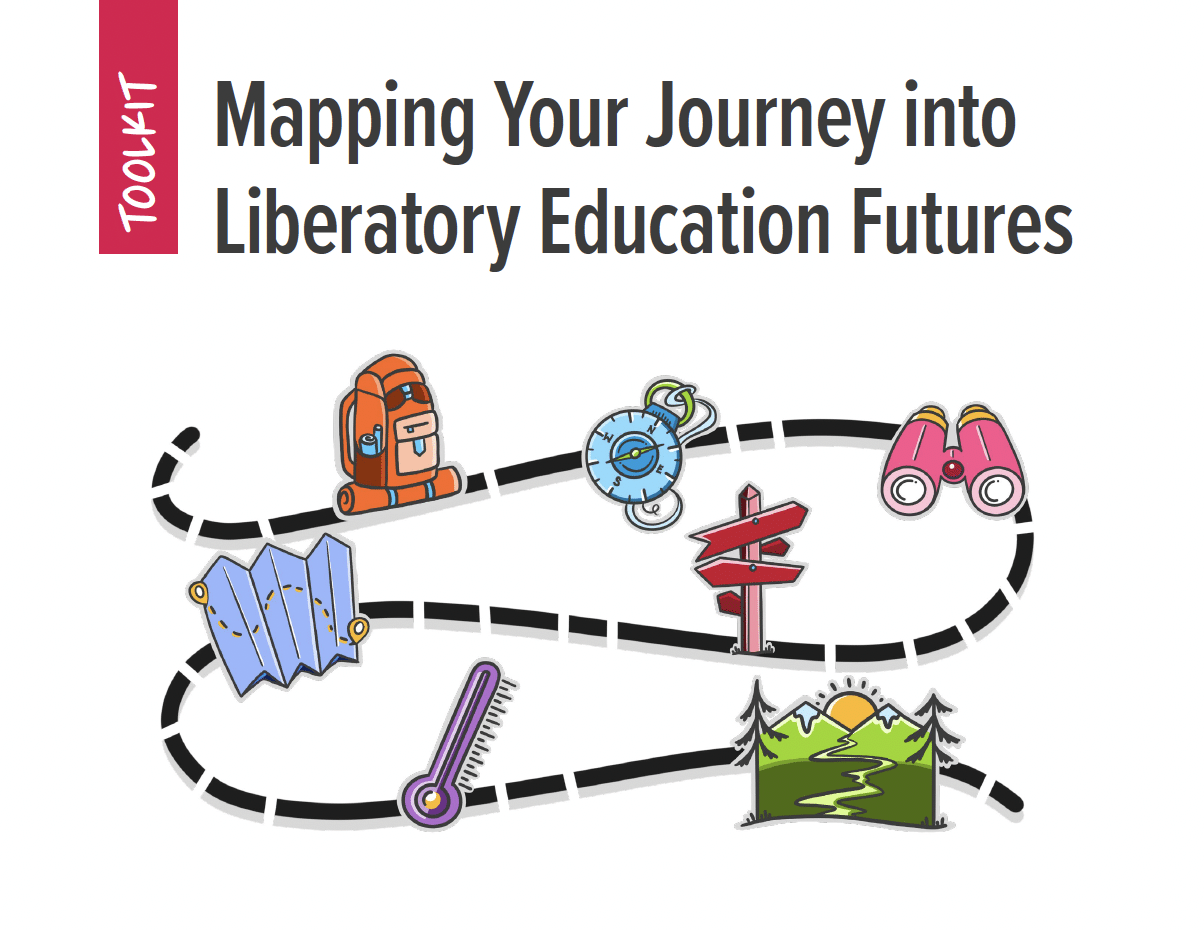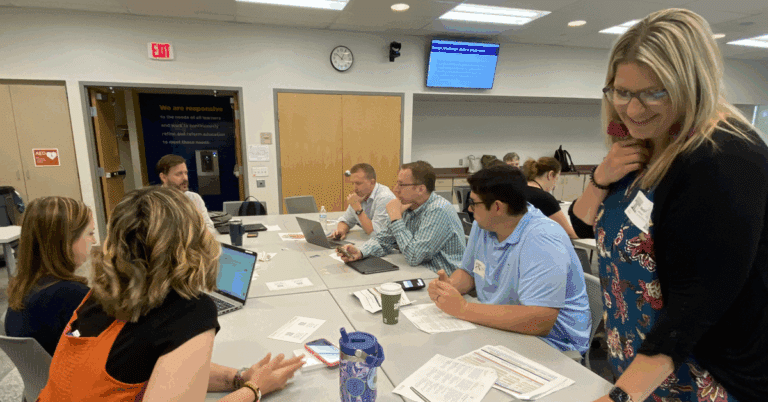This article was written by KnowledgeWorks consultant and former Senior Director of Strategic Initiatives Eric Toshalis, EdD.
Tracking is a barrier to success for our most underserved students, and it hoards opportunity for those already advantaged by a system that was designed according to their interests. Detracking is therefore a crucial reform strategy in any system-wide efforts to achieve equity.
Few know this better than KnowledgeWorks President and CEO Bill Hite, who addressed tracking when he was superintendent of both Prince George’s County Public Schools in Maryland, and the School District of Philadelphia, Pennsylvania. His experiences and the way he and his teams worked with parents, community leaders, administrators and educators to re-design systems to make them more personalized, competency-based and equitable present powerful lessons for anyone concerned about K-12 outcomes and the reform strategies most likely to be successful. The experiences from these two school districts demonstrate that detracking is needed, possible and rewarding beyond measure.
Tracking is the widespread practice of labeling, ranking, sorting and separating students, our children, by perceived academic ability and behavioral compliance. Learn more »
When you were superintendent of large urban school districts, why did you choose to focus on tracking? What was it about this common feature of US K-12 schooling that caused you to prioritize it for reform?
When I was superintendent in Prince George’s County, which is majority Black with a sizable low-income population, we had a student representative on the school board. He was a straight-A kid from an under-represented region in the district who was headed to the Ivy League. During a staff presentation to the board on AP and IB courses this student asked, “How do I get into one of those classes?”
Here we were describing these enriched and accelerated program offerings and that student wasn’t in any of them, didn’t know they were available and wasn’t aware of how to get into them. That woke us up. We took an inventory soon after and we found that those programs were only made available to students in majority-White and higher socioeconomic status schools. From that point forward, we committed to ensuring equitable access and opportunity.
How do we replace the logics and practices of tracking with research-based, equity-enhancing designs? We think personalized competency-based learning is one answer. Learn more »
So you started detracking?
We never thought of it as “detracking.” We asked: “Why aren’t Black children in our higher rigor classes? Why aren’t Latino children in our higher-regarded schools? Why is it that our highest performing elementary schools were in the whitest areas of our district?” When we started looking at the data, we realized we needed to name where access and opportunity were and were not happening.
We committed to putting nine AP or IB courses in every single high school, regardless of demographics. We looked at how kids were qualified for these courses and found that lots of kids had AP-potential but would never have been admitted or had the opportunity due to systemic barriers.
To expand access, we opened AP and IB classes to accept our highest 25% performing students and any child who wanted to take an AP class could do so. We even auto-enrolled many kids so they had to actively opt out, which triggered important goal-setting conversations with counselors. We also removed qualifying classes to open the AP gates even wider. Folks thought that our huge increase in access and enrollment would lower the number of children who would be successful on the AP test, but that turned out not to be the case at all. More students actually passed the AP exam after we opened our enrollment, particularly those students from previously underrepresented groups.
More students actually passed the AP exam after we opened our enrollment, particularly those students from previously underrepresented groups.
How did efforts to detrack and increase access play out in Philadelphia?
In Philly it was a different story. White students were overrepresented in gifted classes even though they were only a small percentage of the student population. Gifted and talented education demographics didn’t represent the full community and almost all students in gifted classes came from only five of 150 elementary schools in the school district.
One change we made to identify more students for the gifted programs was to ensure our nonverbal cognitive assessment was administered to every single child in the 2nd grade district-wide, not just those who requested it. Once all children had access to this assessment, we had way more kids qualify for gifted classes who otherwise would never have been tested due to biases in the system.
Then we had to look at discipline. Namely, who was being suspended, and how often, and even who was being arrested. We found disproportionate representation in those outcomes among Black and Brown boys and girls. So, we discontinued suspensions in K-3, created opportunities for schools to deal more proactively with behavior by using positive behavior, interventions and supports and restorative practices, and we implemented an arrest diversion program to keep students from entering the criminal justice system by receiving counseling instead. We reduced the number of students who were arrested for an event that started at school by something like 800%.
And to ensure students were prepared for more rigorous opportunities we reworked our curriculum. We changed our lottery system for school enrollment so schools couldn’t select and sort kids. Literacy interventions became a focus and we built early identification and support structures to make sure kids weren’t left behind.
In Philly, our interventions were all done to deconstruct systems that were previously dedicated to efficiency rather than prioritizing student needs. It wasn’t working for all students because it was designed to sort and select, which only benefitted a small minority. Until we came to grips with that central fact, we knew we were going to have the same conversations about inequity every year.
If we wanted to detrack, we had to admit these root causes, not just tackle symptoms. We needed to build a new system intended to educate everyone.
How did you respond to parents and caregivers who didn’t want the system to change, who wanted to retain tracking due to the advantages it was supplying for their kids?
Not everyone supported our efforts. In Prince George’s County, we were threatened with class action lawsuits based on what we were trying to do, mostly from families who were used to privileged access and who had moved to specific neighborhoods to attend specific schools. They asked, “If you remove tracking, what is the system? What opportunities are available for my child?” This required a lot of strategic conversations, outreach and messaging. It also required some courage to be able to take on that fight and persist.
In Philadelphia, parents had also moved to certain neighborhoods due to educational opportunities. Curriculum reform was key. As we made changes to access, opportunity, instruction and assessment, our outcomes improved. People wanted to move to neighborhoods previously ignored.
Leaders at the local level helped us turn the tide by spreading the word that their school was being reformed to serve all students. We created systems to support those leaders who were challenged by working in and around the old structures but who wanted to do things like schedule children differently, enhance rigor, build bilingual programs, open gates to accelerated learning opportunities, implement restorative justice and deeply engage families to ensure the school was responsive to their needs. Once we did this, the message changed. It became, “We’re about every child in this neighborhood. This is what we’re going to expose them to. This is how we’re going to keep them safe. And this is how we’re going to include parents in our decision making.”
What kind of leadership did you and your team need to sustain these education reforms?
Leadership meant listening with empathy to those parents who feared new structures and may have said things like, “I don’t want my kid learning with those kids.” We had to acknowledge that families are giving you their most precious resource — their children — and they expect that precious resource to be educated. I invited those individuals to visit schools and many were pleasantly surprised about the great stuff happening there and the opportunities we were opening for all kids.
We saw that individuals who have most benefitted from the system that tracks our kids want to see that safety standards, rigor, engagement and opportunities are available. We had to expand AP access everywhere, for everyone, and keep standards high. Same with dual enrollment for students to take classes at the local colleges and universities. We had to show that we were lifting a system, that the system wouldn’t just benefit those who made the most noise. And yes, some families moved away. But most stayed.
Leadership like this takes courage, not just the superintendent or the individuals leading the effort at the school level. It also takes board members and other elected officials. Leaders needed to stand up and admit publicly and repeatedly that this system was not working for everyone. We gave them the information they could use to make those statements, but it was up to them to go public with it.
How did data inform your decisions and how you talked about the work?
The data told the truth. We received support from organizations like the Education Law Center, and we engaged a host of community leaders to build public will for the changes. Folks began to recognize we had a system that wasn’t accessible by all students and families. Those most heavily impacted were Black and Brown kids, but also special education kids, emerging bilingual students, etc. We had advocates in those communities to help us message and galvanize, and those relationships turned out to be crucial.
We knew we needed to supply key players with the data, the rationale and the plan. They may have not initially agreed with all of our changes, but because they had a heads up they were better positioned to understand what we were trying to do and potentially support it. The time and energy spent connecting with and educating those leaders paid off immeasurably.
What happened once schools and systems detracked? How did learning environments, teaching strategies, educators, students and families change?
The Education Law Center blessed our approach and the fact that we were prioritizing detracking. There was a powerful opinion piece in The Inquirer about our efforts that helped generate support in marginalized communities.
But a key affirming moment happened at a school in North Philly. In more than 80 years, not a single student from this school had received an offer to attend a magnet school. The year after we made big changes, five children from that school got into our highest performing magnet school. At that moment, I thought “This is why we do this.”
Even with the best laid efforts, when you have systems and structures overlayed with threats, educators and admins will always default to whatever is being measured. We need a system that is capable of adjusting to the variability of where children start and what they need to grow and develop. Educators also needed to know that ours wasn’t a reform that would just go away. We engaged our professional educator workforce in a meaningful conversation about what assessment and accountability should look like. We need to give educators the freedom to say, “I don’t know how to do this!” Change is hard, but we expect our students to take risks and fail every day. We need to set the same expectation for our adult learners.
Our work was to better identify those who had been denied access and to set the stage for systemic detracking. Our students always had the ability; they just didn’t have the access.
Now, school leaders and teachers are creating learning structures that are more responsive to the learner, with multiple backgrounds and ways of knowing integrated. The curriculum is becoming more linguistically and culturally inclusive, and staff understand the rationale for and practices of culturally sustaining pedagogies. They understand how to differentiate.
School and classroom leaders had to see we were serious about systemic change and creating access – and were equally serious about supporting them – without fear of punishment if scores weren’t getting where we needed them to be immediately. We rebuilt our assessment and accountability system to hold teachers accountable to doing the work to build curriculum and instruction to meet students where they are. Teachers needed to be free to respond productively to the variance in student readiness to master a particular standard. This is very different from being pressured to keep moving and be efficient and let some kids fall further behind as long as most make a certain score on a test. We had to make it clear to our educators that no one was going to come in and rate a teacher on whether all of their kids are doing the same thing on the same day and studying a particular page of the textbook by a certain date. We gave them permission and encouragement to personalize, not standardize.
What advice would you give to any school or systems leader who wants to detrack?
Expect struggle and pushback, internally and externally. Acceptance takes a while. Know that resistance doesn’t mean you’re failing – it might actually mean you’re succeeding.
Respect and include the voices of those who will be impacted by these changes. Don’t just give a PowerPoint presentation to them – that’s not engagement. Listen to their concerns, understand their perspective and what they need.
We didn’t do this next part exceptionally well, but it’s crucial to garner partners who can help define and communicate the rationale and need for detracking. You need partners who have the street cred to be heard. Cultivating those partners takes time because folks often have historical experiences of distrust and it can take a while to overcome that.
For communication, err on the side of saturation. There’s no such thing as too much communication when it comes to systems change.
Lastly, you just gotta have courage. Be honest about what isn’t working and talk openly about it. Then focus people on what’s needed to improve it. You’ll take your hits, but stick with it. The payoff is incredible.
Tracking can and should be replaced by personalized, competency-based learning, which emphasizes meeting the needs of each learner.








